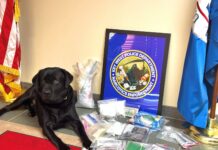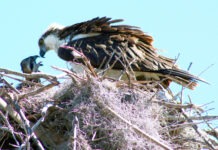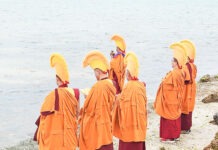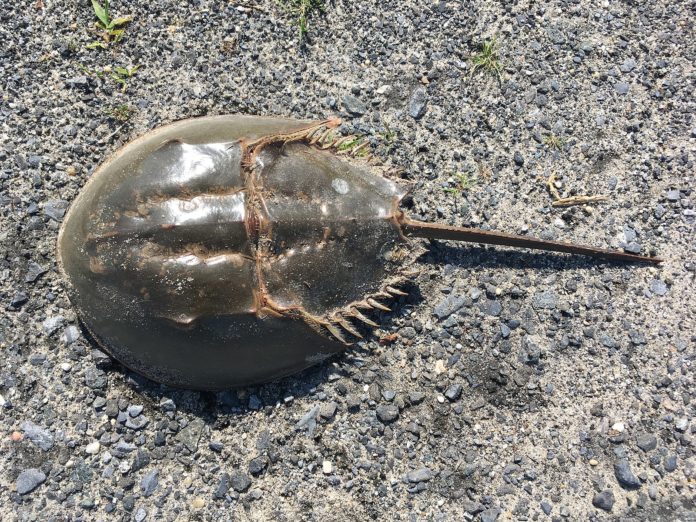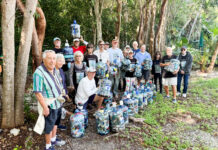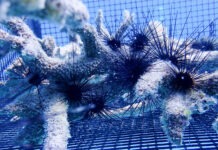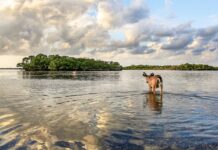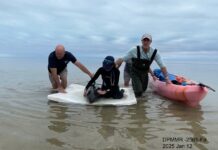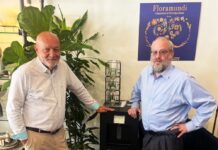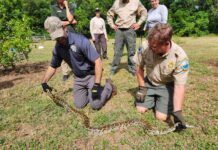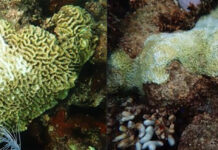Did you know horseshoe crabs were around 200 million years before the dinosaurs, but are not actual crabs? They’re related to spiders, ticks and mites. And their pointed tail, or telson, is not a stinger. Horseshoe crabs are harmless to humans. While scientists know a great deal about them as animals, very little is known about the horseshoe crab population or the location of nesting beaches in the Florida Keys.
Beachgoers regularly report seeing mating couples and quarter-sized babies, so experts suspect horseshoe crabs are breeding year round in the Florida Keys.
Shelly Krueger is a marine biologist and the Monroe County coordinator of the Florida Horseshoe Crab Watch. The project is looking for volunteers to collect data for the first horseshoe crab stock assessment in Florida.
The agency is looking for volunteers to collect data for the first horseshoe crab stock assessment in Florida. The free 1.5-hour training course is now virtual. To register, call Krueger 305-292-4501 or email shellykrueger@ufl.edu.
For those who don’t want the training, but still want to report horseshoe crabs, call 305-292-4501 or use the smartphone app called FWC Reporter, which is a great application for reporting all kinds of animals and invasive species sightings.
Fun facts about horseshoe crabs:
- Some people think their tail is a stinger, but that is false – since they do not have arms they use their tail (called the telson) to turn themselves right side up when they get flipped over. Horseshoe crabs are harmless to humans.
- At 8 to 10 years of age, the males and females have one final molt, where they shed their old carapace to grow larger. The males grow “boxing gloves” on their front claws, which they use to hold on to the female during mating season. Sometimes the smaller male will stay attached to the larger female for several weeks at a time, and the female drags him behind her up to the beach to lay eggs and then back underwater to eat clams and worms.

